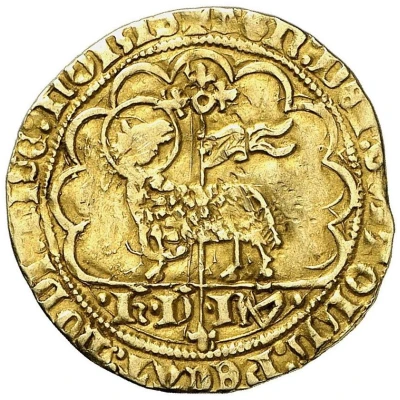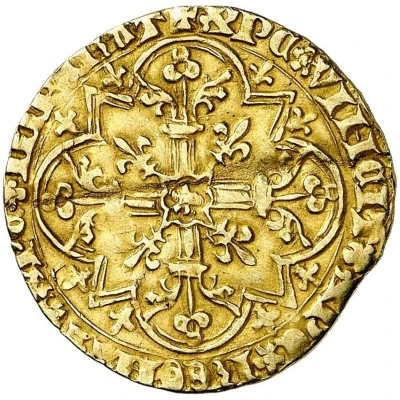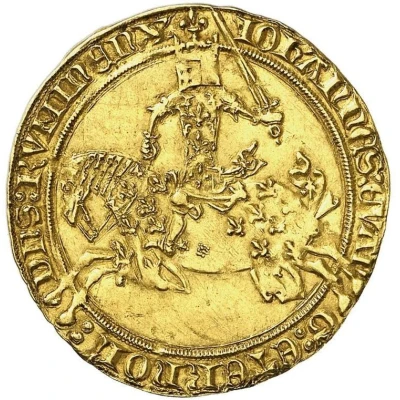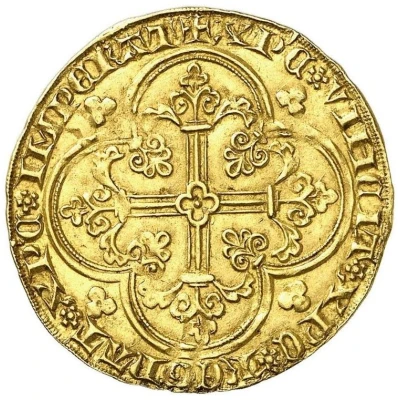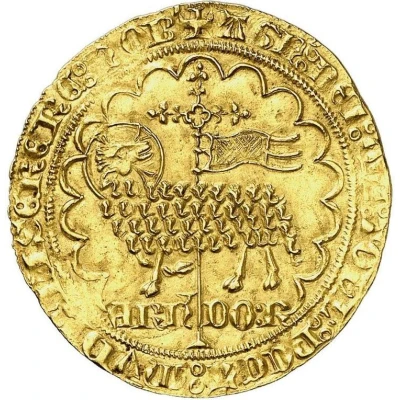
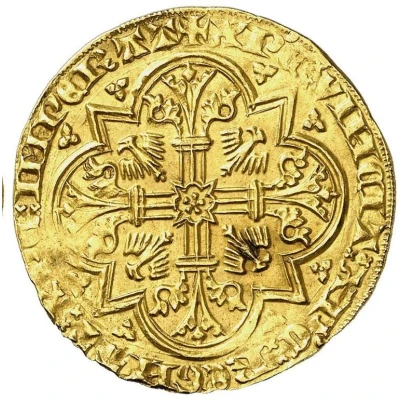

© Fritz Rudolf Künker GmbH & Co. KG, Osnabrück and Lübke & Wiedemann KG, Leonberg
Agnel "Mouton d'Or" - Arnold of Oreye ND
| Gold | 4.64 g | - |
| Issuer | Lordship of Rummen (Belgian States) |
|---|---|
| Lord | Arnold of Oreye (Arnold van Oreye) (1355-1370) |
| Type | Standard circulation coin |
| Years | 1357-1370 |
| Value | 1 Agnel |
| Currency | Groot (-1506) |
| Composition | Gold |
| Weight | 4.64 g |
| Shape | Round (irregular) |
| Technique | Hammered |
| Demonetized | Yes |
| Updated | 2024-10-04 |
| Numista | N#318202 |
|---|---|
| Rarity index | 100% |
Reverse
Floriate triple cross with rosette in center and eagles in the angles, inside quadrilobe with points at corners. Eight small trefoils surrounding.
Script: Latin (uncial)
Lettering: ✠ XP'C ⁑ VINCIT⁑ XP'C ⁑ REGNAT ⁑ XP'C ⁑ IMPERAT
Lettering (regular font): ✠ XP'C ⁑ VINCIT⁑ XP'C ⁑ REGNAT ⁑ XP'C ⁑ IMPERAT
Unabridged legend: Christus vincit, Christus regnat, Christus imperat
Translation: Christ conquers, Christ reigns, Christ commands
Comment
The Lords of Rummen imitated coins of adjacent states, in this case the Nouton d'Or of Jeanne & Wenceslas of Brabant (see link)Interesting fact
One interesting fact about the Agnel "Mouton d'Or" coin is that it was minted during a time of great economic and political change in the region. The Lordship of Rummen, where the coin was minted, was a small territory in what is now Belgium, and the coin was likely used as a form of currency for local trade and commerce. Despite its small size, the coin was made of gold, indicating the wealth and prosperity of the region at the time. Additionally, the coin features an image of a sheep on one side, which was a symbol of prosperity and abundance in medieval times. Overall, the Agnel "Mouton d'Or" coin provides a fascinating glimpse into the economic and cultural history of medieval Europe.
